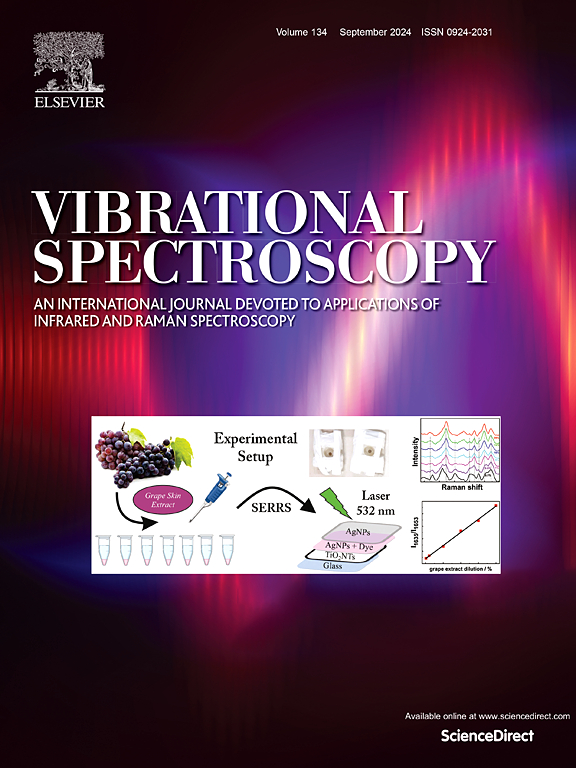二胺氟化银预防酸致龋进展的拉曼光谱评价
IF 3.1
3区 化学
Q2 CHEMISTRY, ANALYTICAL
引用次数: 0
摘要
氟化二胺银的抗菌机制,以及它预防龋齿的能力,是公认的。本研究的目的是明确评估氟化二胺银除了抗菌性能外,是否能够在酸性环境中抑制龋齿的发展,其程度与硝酸银相同。该结果将有助于确定这两种化合物中哪一种在预防和治疗早期龋齿病变方面具有更大的应用潜力。为了实现这一目标,研究人员在四种情况下对牙齿进行了研究:健康、第一次脱矿后、使用测试化合物后和第二次脱矿后。在研究的每个阶段,使用拉曼光谱来评估牙釉质结构的变化。这些发现表明,虽然这两种化合物都不能完全抑制脱矿的进程,但它们都能减缓脱矿的进程。此外,两种化合物在减少病变进展的有效性方面没有显著差异。一个值得注意的观察结果是,氟化银二胺被脱矿溶液冲走,导致它提供的保护屏障消失。这一发现可能是由于化合物对牙釉质的渗透深度有限。化合物主要渗透到脱矿区,但我们研究的牙釉质脱矿深度约为200 µm。这种有限的渗透可以解释化合物被洗出及其抑制脱矿的效果降低的原因。本文章由计算机程序翻译,如有差异,请以英文原文为准。
Raman spectroscopic evaluation of silver diamine fluoride in preventing acid-induced caries progression
The antibacterial mechanisms of silver diamine fluoride, as well as its ability to prevent tooth caries, are well-established. The aim of this study was to provide a clear evaluation of whether silver diamine fluoride, in addition to its antibacterial properties, is capable of inhibiting the progression of dental caries in an acidic environment to the same extent as silver nitrate. The results will help determine which of these two compounds has greater potential for application in the prevention and treatment of early carious lesions. To achieve this goal, studies were conducted on teeth under four conditions: healthy, after first demineralization, following the application of the tested compounds, and after second demineralization. At each stage of the research, Raman spectroscopy was used to assess changes in the enamel structure. These findings showed that, although neither compound completely inhibits the progression of demineralization, both can slow it down. Furthermore, no significant differences were observed between the two compounds in their effectiveness in reducing lesion progression. A notable observation was that the silver diamine fluoride was washed away by the demineralizing solution, causing the protective barrier it provided to disappear. This finding may be attributed to the limited penetration depth of the compounds into the enamel. The compounds primarily penetrated the demineralized areas, but the depth of enamel demineralization in our study was approximately 200 µm. This limited penetration could explain the washing out of the compound and its reduced effectiveness in inhibiting demineralization.
求助全文
通过发布文献求助,成功后即可免费获取论文全文。
去求助
来源期刊

Vibrational Spectroscopy
化学-分析化学
CiteScore
4.70
自引率
4.00%
发文量
103
审稿时长
52 days
期刊介绍:
Vibrational Spectroscopy provides a vehicle for the publication of original research that focuses on vibrational spectroscopy. This covers infrared, near-infrared and Raman spectroscopies and publishes papers dealing with developments in applications, theory, techniques and instrumentation.
The topics covered by the journal include:
Sampling techniques,
Vibrational spectroscopy coupled with separation techniques,
Instrumentation (Fourier transform, conventional and laser based),
Data manipulation,
Spectra-structure correlation and group frequencies.
The application areas covered include:
Analytical chemistry,
Bio-organic and bio-inorganic chemistry,
Organic chemistry,
Inorganic chemistry,
Catalysis,
Environmental science,
Industrial chemistry,
Materials science,
Physical chemistry,
Polymer science,
Process control,
Specialized problem solving.
 求助内容:
求助内容: 应助结果提醒方式:
应助结果提醒方式:


